The Marin Rift Zone 29 2 is the second most affordable model in Marin’s range, costing £2,255.
Rolling on 29in wheels, the Rift Zone 2 offers 130mm of rear-wheel travel and runs a 140mm fork.
Aimed at the budget-minded trail rider, it's intended to balance affordability and performance by relying on an entry-level build.
Out on the trail, the Rift Zone impressed me with its capable and encouraging geometry.
But the combination of under-powered brakes and unpredictable tyres limited its performance on demanding terrain and conditions.
Marin Rift Zone 29 2 frame and suspension
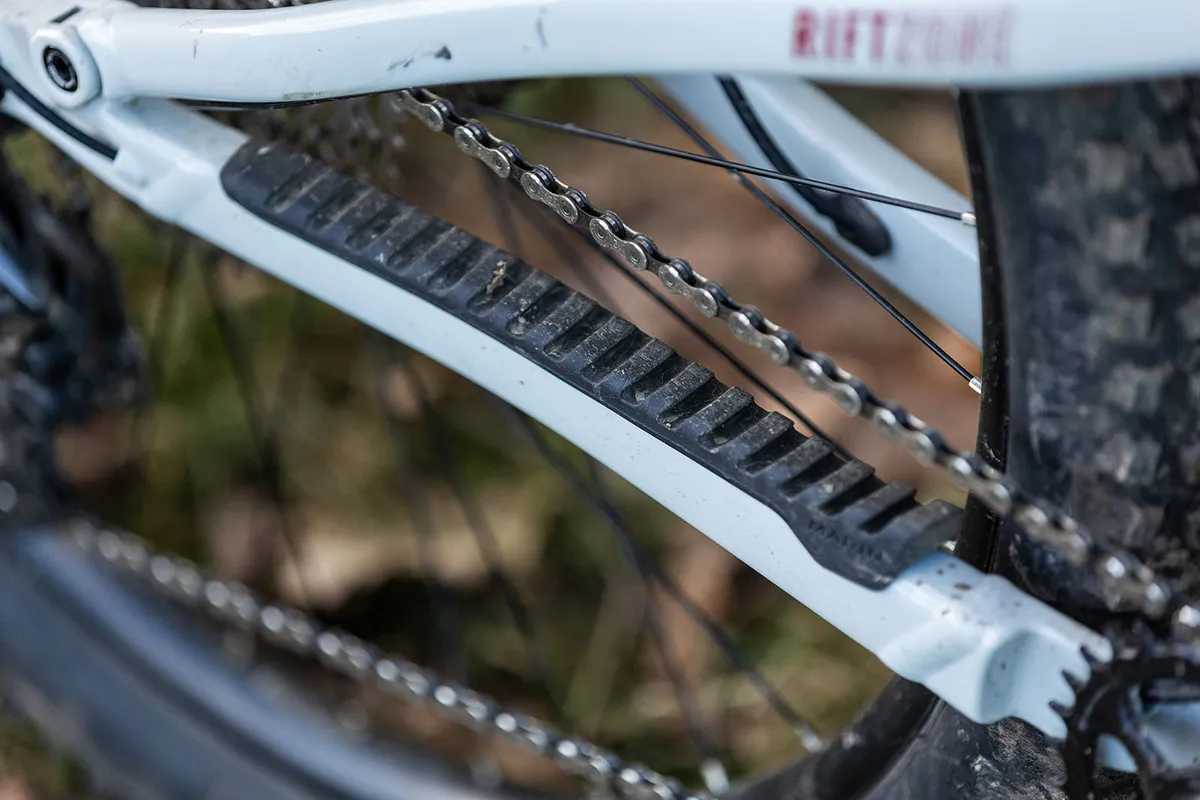
At the heart of the Rift Zone 29 2 lies Marin’s 6061 aluminium frame.
Finished with a threaded bottom bracket and SRAM’s Univeral Derailleur Hanger, the frame features internal cable routing and Marin’s MultiTrac suspension platform that delivers 130mm of travel.
The frame itself looks sleek, with a low-slung top tube, short seat tube and a compact rocker link.
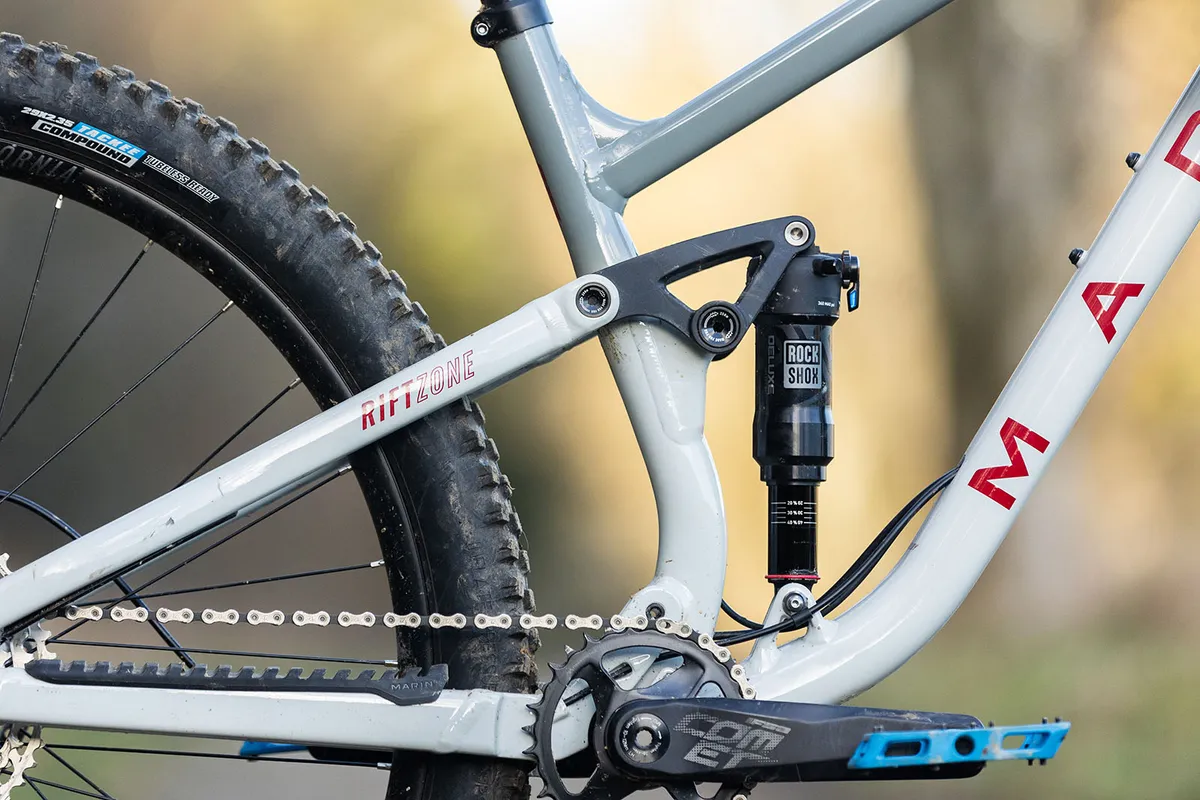
The cable routing is simple and effective, and despite lacking rubber guides where the cables enter the top tube, I didn’t hear any rattling.
It’s also nice to see a thick rubber chainstay protector included.
Marin Rift Zone 29 2 geometry
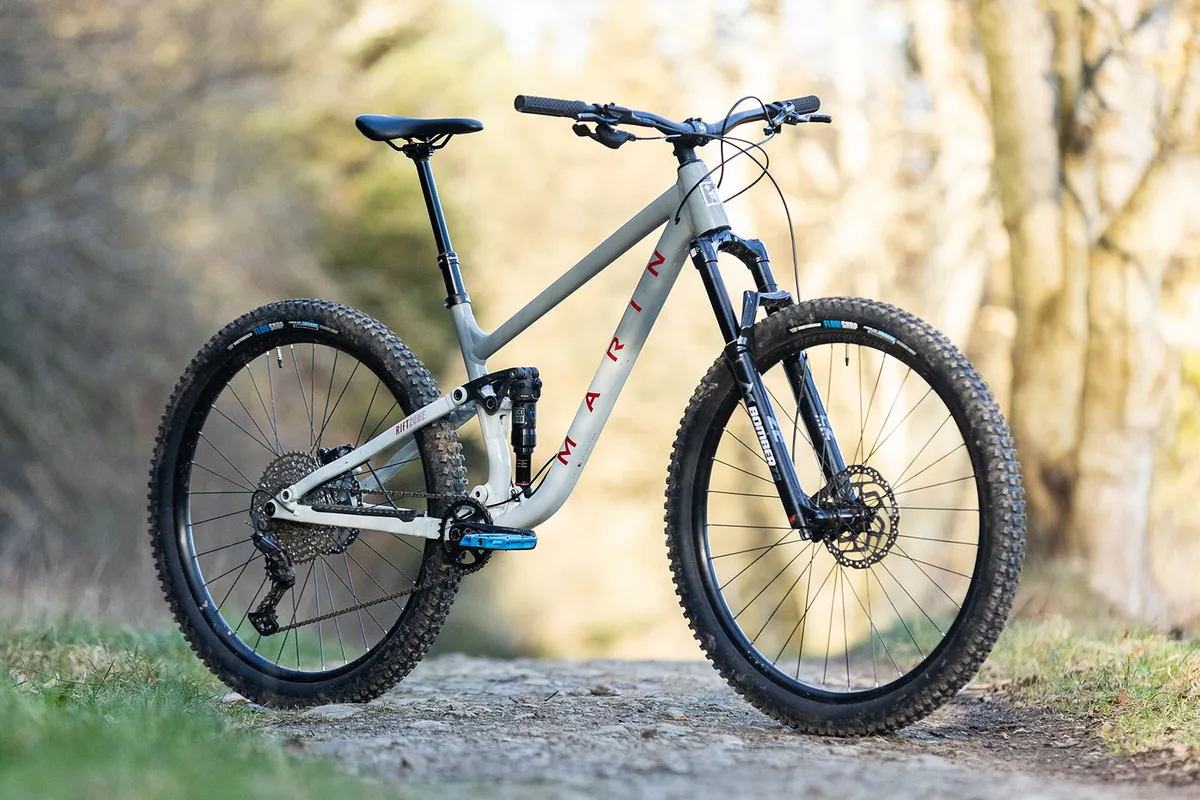
The Rift Zone’s geometry is aimed squarely at aggressive trail riding.
Marin employs a ‘long and low’ ethos throughout its range and the large-size Rift Zone enjoys a relatively slack 65.5-degree head angle, a stretched 485mm reach and a 1,234.4mm wheelbase.
The seat tube is short at 425mm and, combined with the low-slung top tube and 637mm stack height, should create a confidence-inspiring riding position.
The bottom bracket sits at 343mm with a 35mm drop and the chainstays are a compact 430mm across the size range.
| Size | Small | Medium | Large | Extra-large |
|---|---|---|---|---|
| Reach (mm) | 435 | 460 | 485 | 515 |
| Stack (mm) | 623.6 | 628.2 | 637.3 | 641.8 |
| Head tube angle (degrees) | 65.5 | 65.5 | 65.5 | 65.51 |
| Seat tube angle (degrees) | 77 | 77 | 77 | 77 |
| Seat tube length (mm) | 390 | 400 | 425 | 430 |
| BB height (mm) | 343 | 343 | 343 | 343 |
| Wheelbase (mm) | 1,170 | 1,205.10 | 1,234.40 | 1,266.30 |
| Chainstay (mm) | 430 | 430 | 430 | 430 |
| Top tube (mm) | 579 | 605 | 632.1 | 663.2 |
| Standover (mm) | 690.2 | 691.2 | 701.7 | 700.5 |
Marin Rift Zone 29 2 specifications
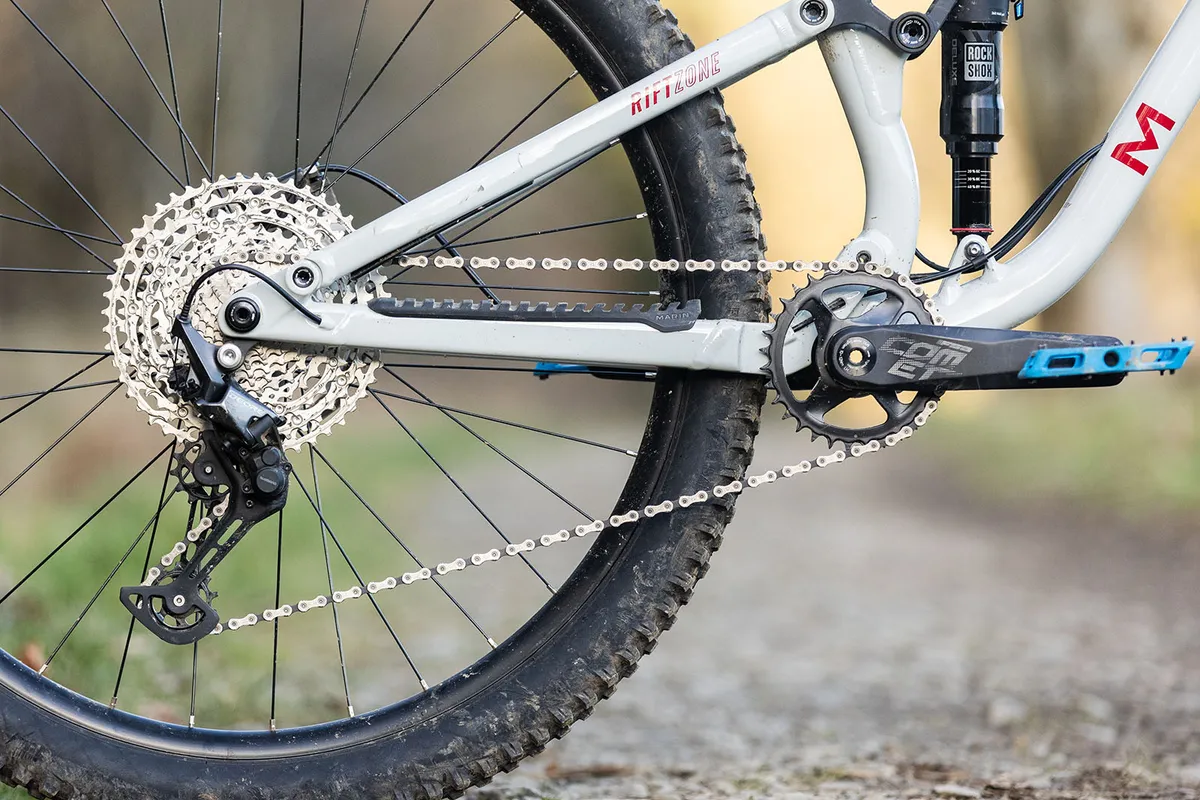
The £2,225 Rift Zone 2’s specs are impressive.
It’s fitted with Shimano’s Deore 12-speed drivetrain which, as well as being a durable workhorse, also uses Shimano’s Micro Spline hub, opening up the potential for upgrading the Marin’s cassette without having to upgrade the freehub body.
The 130mm of rear suspension is delivered by a RockShox Deluxe Select RT. Up front, the 140mm Marzocchi Bomber Z2 features a simple Rail damper with a lock-out lever.
Sizes M-XL come fitted with a 170mm TranzX dropper post. However, due to the Marin’s geometry, I could easily have run a 200mm dropper post on my test bike and benefitted from even more backside-to-seat clearance.
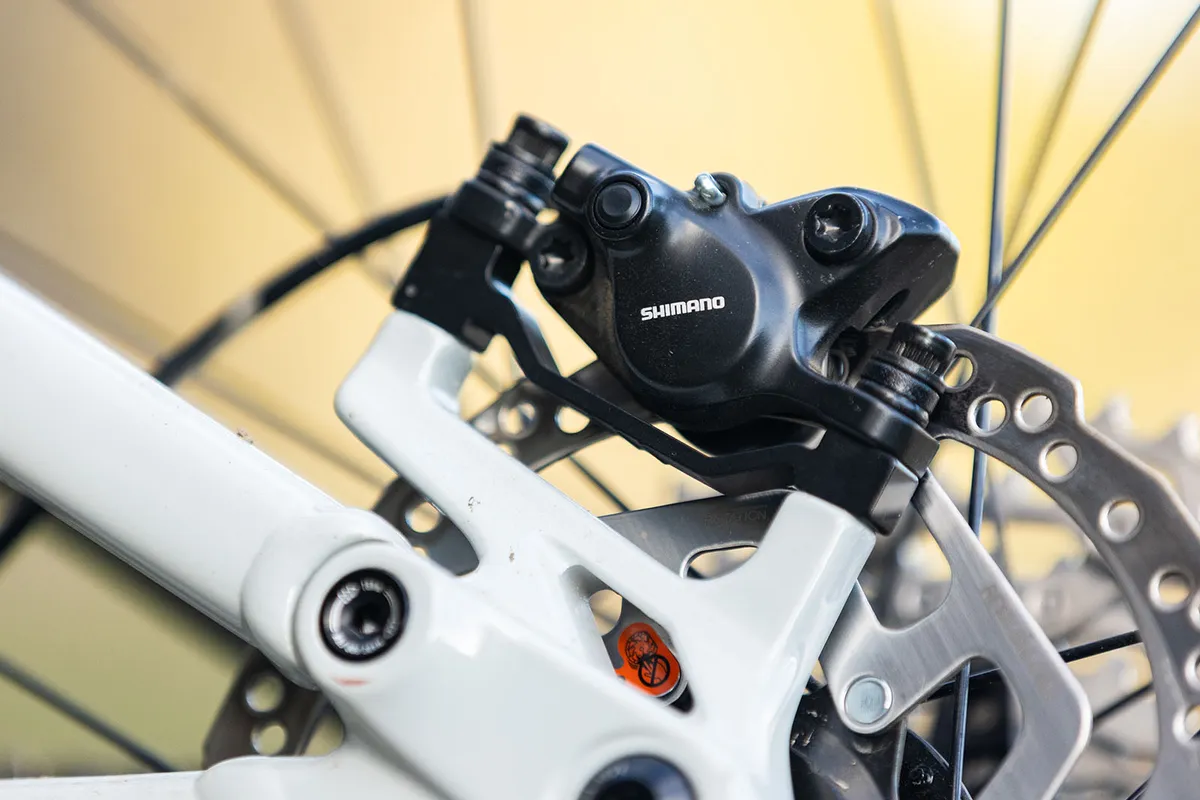
Braking is handled by Shimano’s BR-MT200 stoppers. Marin’s in-house rims are laced to Shimano hubs and are kitted out with Vee Flow Snap tyres.
Due to a global shortage of components, the spec list on Marin’s website differs slightly from the components on this test bike.
All in all, my large test bike weighed 15.5kg without pedals.
Marin Rift Zone 29 2 ride impressions
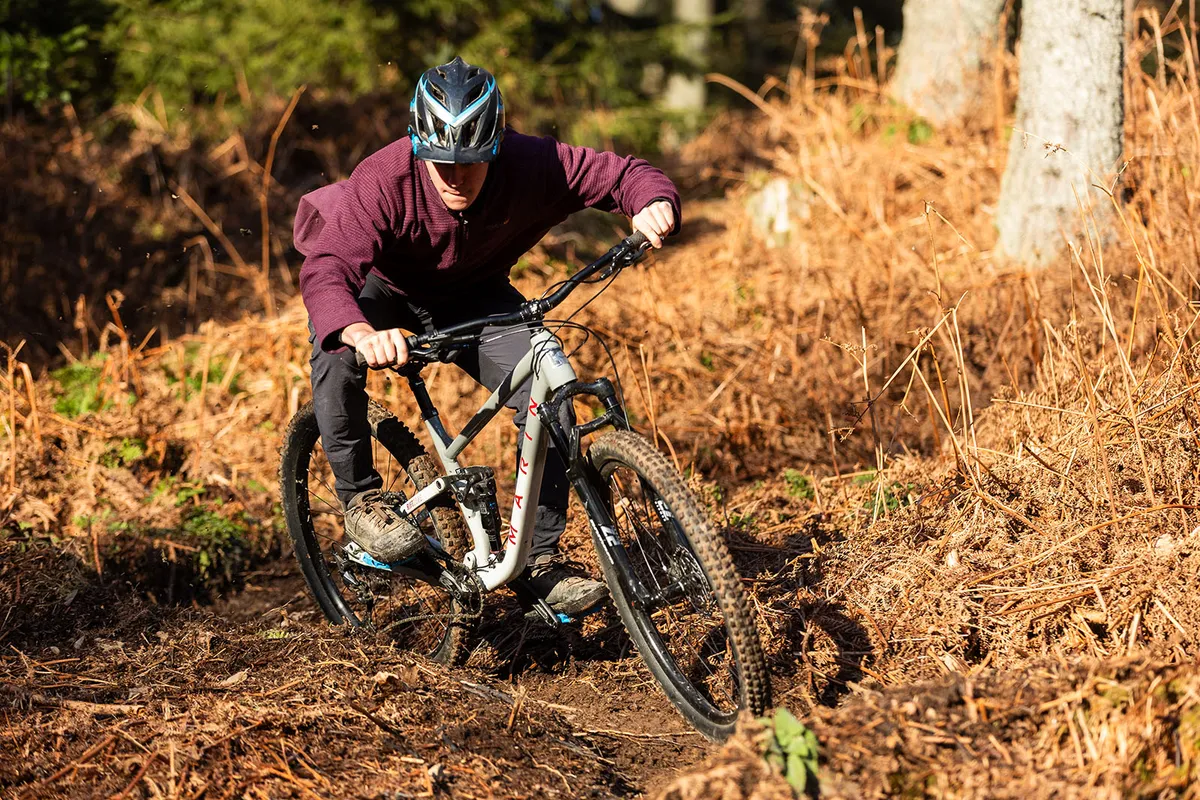
Getting the Rift Zone dialled in took a little bit of fettling.
After raising the stem by 5mm, I moved the long, two-finger brake levers inwards of the shifter and dropper levers to enable me to brake with one finger.
This was an arduous task, because every bolt that needed to be loosened to move the grip, shifter, dropper and brakes required a different-size Allen key.
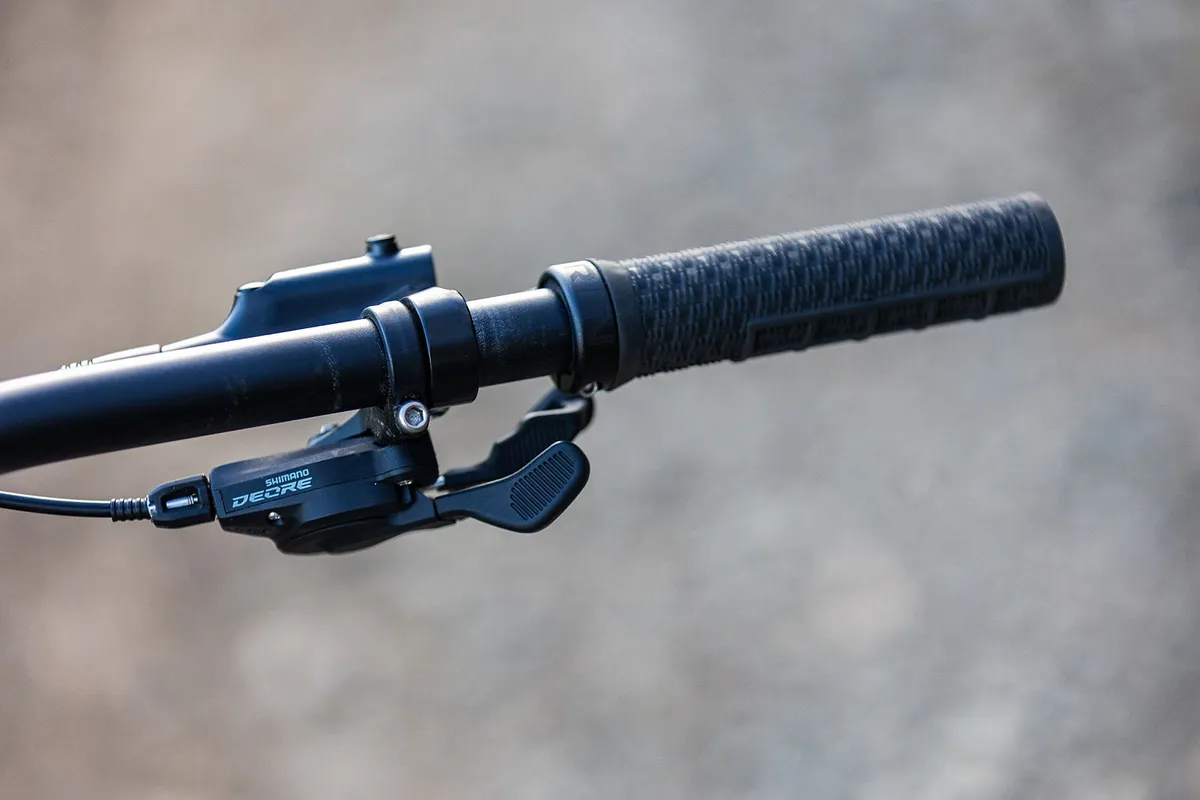
Finding a baseline setting for the Marzocchi Bomber Z2 was made easy by the lower-leg setup chart.
However, I found the RockShox Deluxe Select a little harder to gel with. For my 74kg weight, I settled at 160psi after playing around with the setup.
Although this is slightly below Marin’s recommendation, I found the shock hesitant to use the last part of its travel. Dropping the pressure any lower resulted in too little support, with the shock blowing through its travel easily.
Marin Rift Zone 29 2 climbing performance
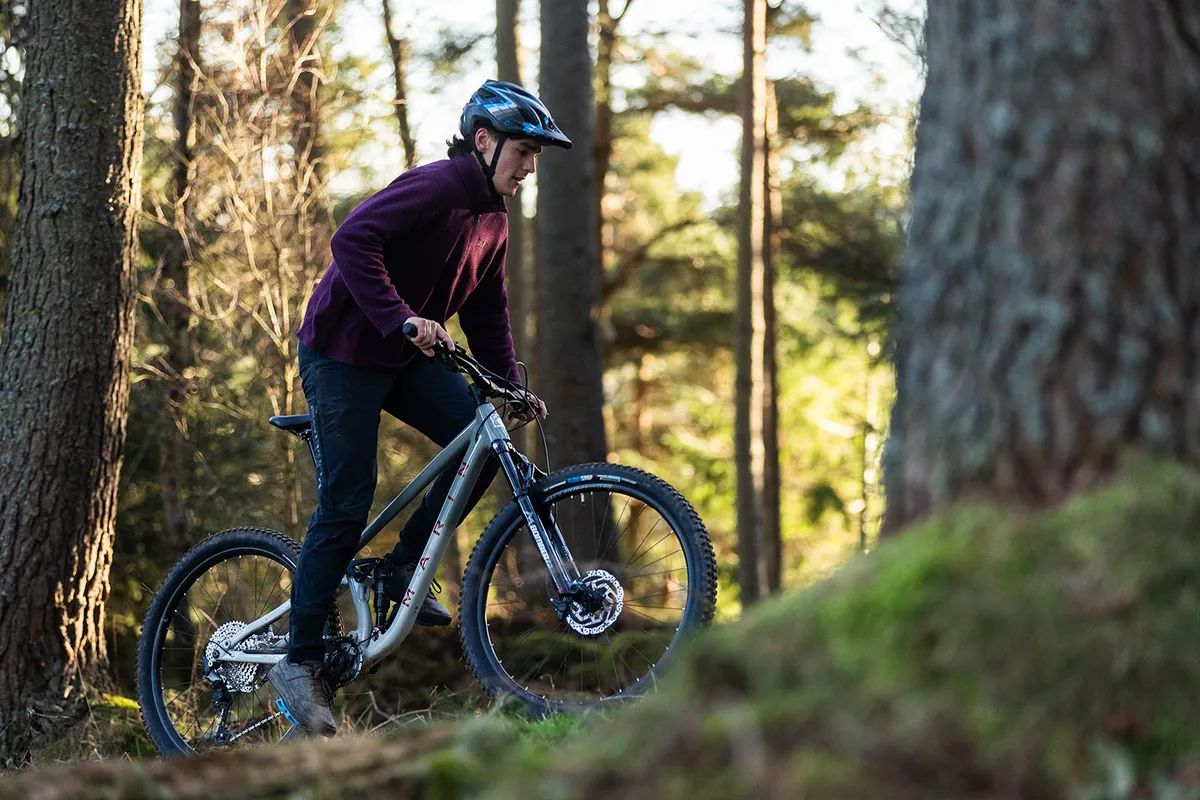
On the climbs, the Rift Zone’s geometry makes for an upright and comfortable climbing position.
Both the Marzocchi Bomber fork and RockShox Deluxe Select shock can be fully locked out, but I never felt the need to reach for either lever because the suspension creates a stable pedalling platform.
While it's no cross-country rocket, I was more than happy to spin the Rift Zone up fire-road climbs at a decent pace, without the bike bobbing or sapping my energy.
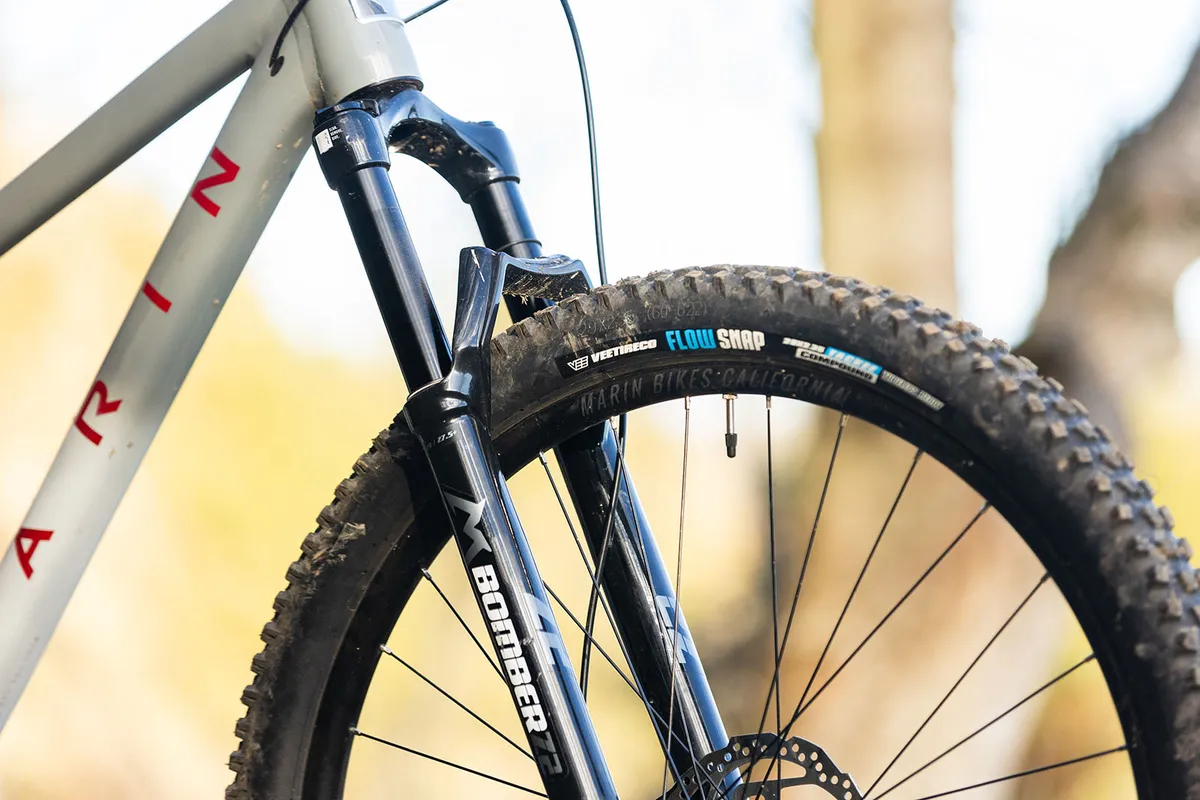
On technical climbs, it tracks the ground well and I didn’t struggle with grip.
Steep switchbacks are easily navigated too – the steep seat tube angle helps to keep your weight centred on the bike and I didn’t feel the front end wandering or lifting on steep ascents.
When pedalling hard out of the saddle, the suspension remains relatively neutral, enabling the Rift Zone to accelerate willingly.
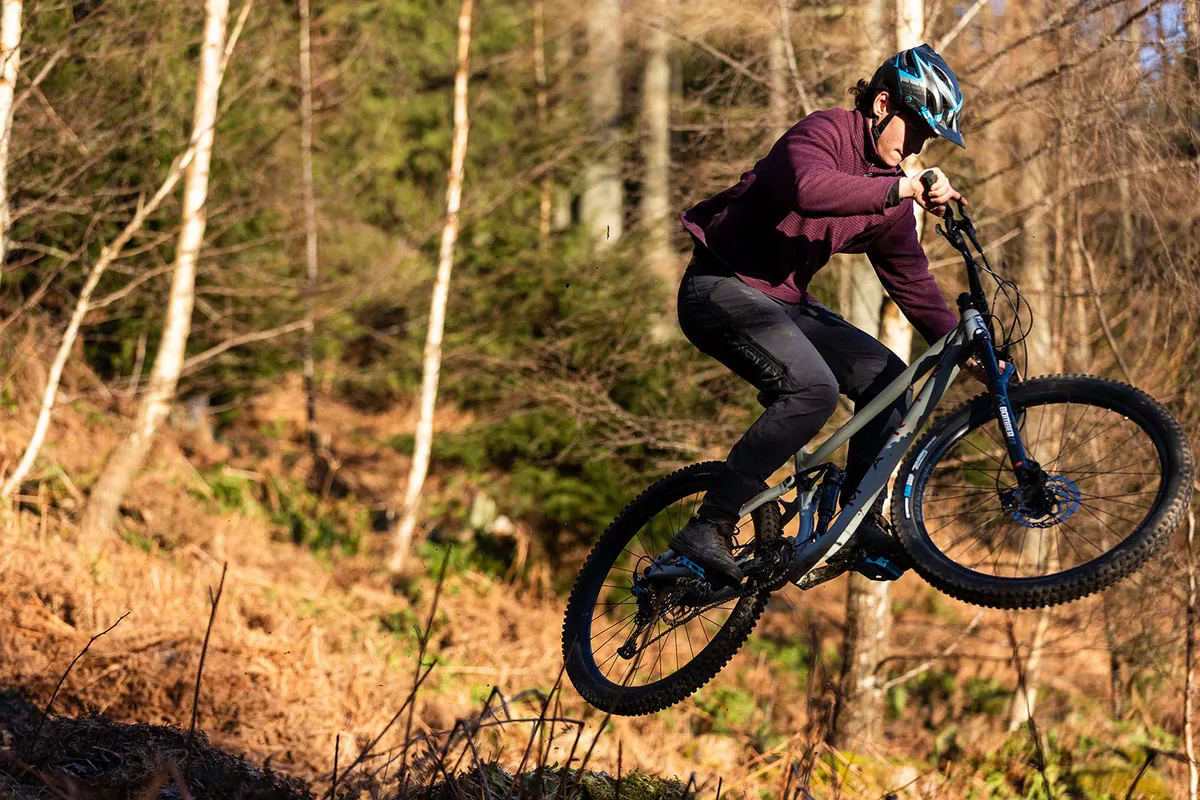
However, Vee’s Flow Snap tyres are a little draggy on soft ground, which weighed down the otherwise sprightly-feeling Rift Zone.
The Shimano Deore drivetrain proved itself as a solid, durable option, delivering crisp and reliable shifts and plenty of range from its 10-51t cassette.
The TranzX dropper post also performed smoothly, although the large lever feels somewhat clumsy compared to other designs on the market.
Marin Rift Zone 29 2 descending performance
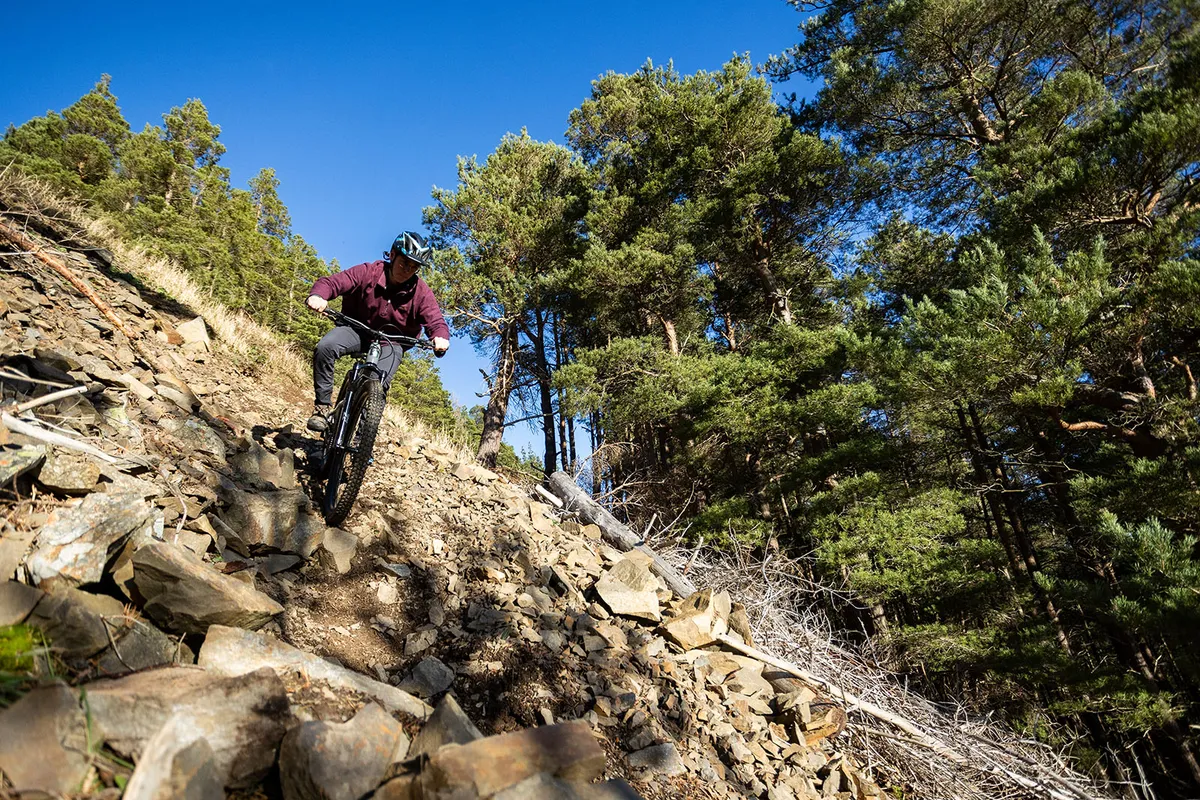
On the descents, I was immediately impressed by the confidence-inspiring geometry.
The relatively slack head angle, low-slung frame and short seat tube give an in-the-bike feeling and make the Marin a blast to ride through corners.
It felt balanced and predictable, with geometry that rewards an aggressive riding style.
However, despite the frame’s encouragement to push harder, some of the components, namely the Shimano BR-MT200 brakes, limited the Rift Zone’s potential.
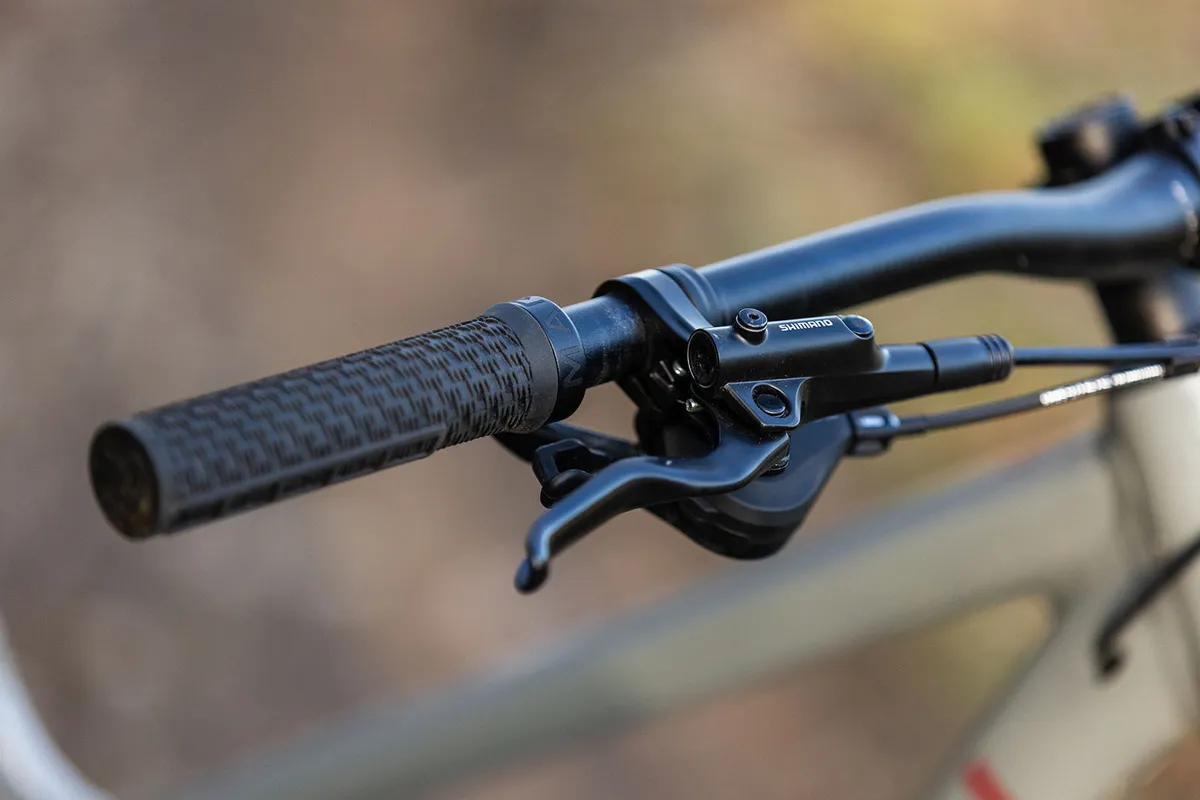
With twin-piston calipers, two-finger levers and 180mm rotors, the brakes felt desperately under-powered, fading even on shorter trails.
The levers also delivered a very wooden feel, with vague power delivery, requiring a lot of force to generate enough stopping power.
I was also left wanting more from Vee’s Flow Snap tyres. While the Tackee rubber compound felt good in grippy conditions, it quickly lost its predictability when the trails got wet, loose or rooty.
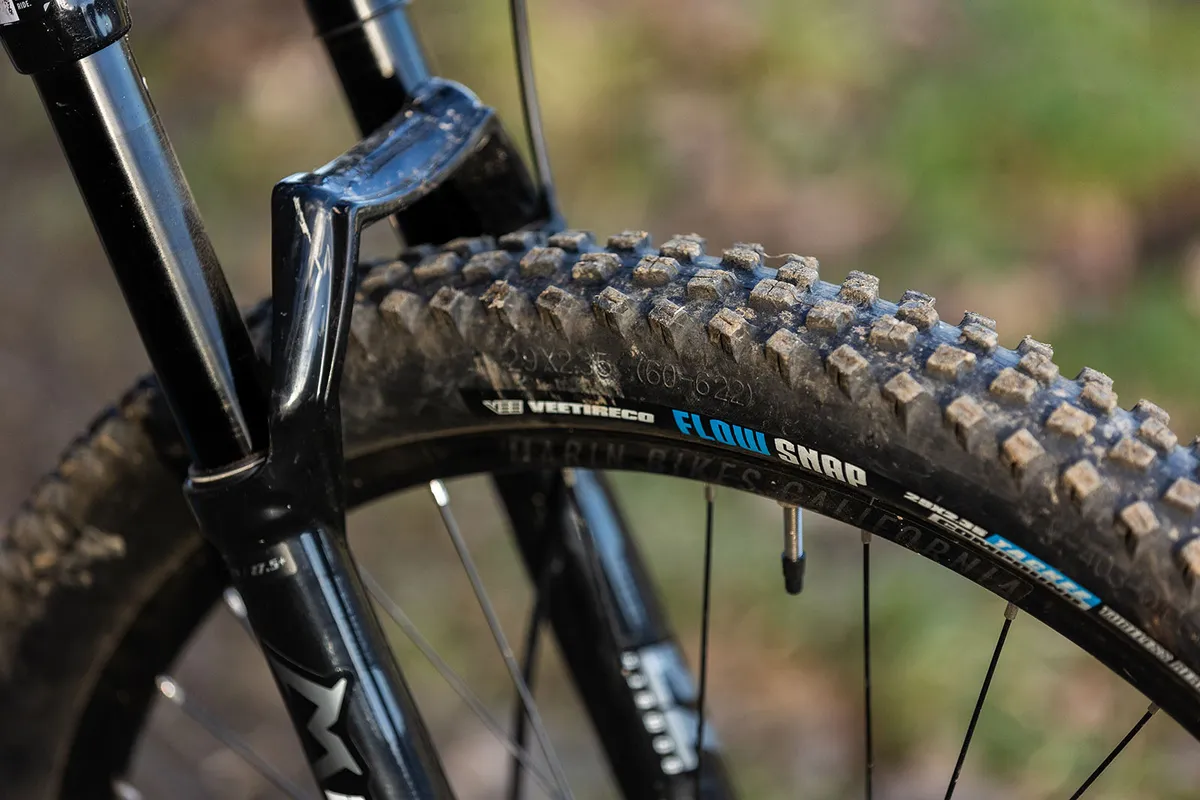
The lack of modulation and vague brake feel made it hard to gauge the levels of traction available to the tyres, resulting in moments of sudden loss of traction.
Once I’d finally got it set up, the MultiTrac suspension platform offered plenty of support, enabling me to push into the trail for swift direction changes and pump from turn to turn.
On smoother trails, there’s plenty of pop, encouraging a playful riding style.
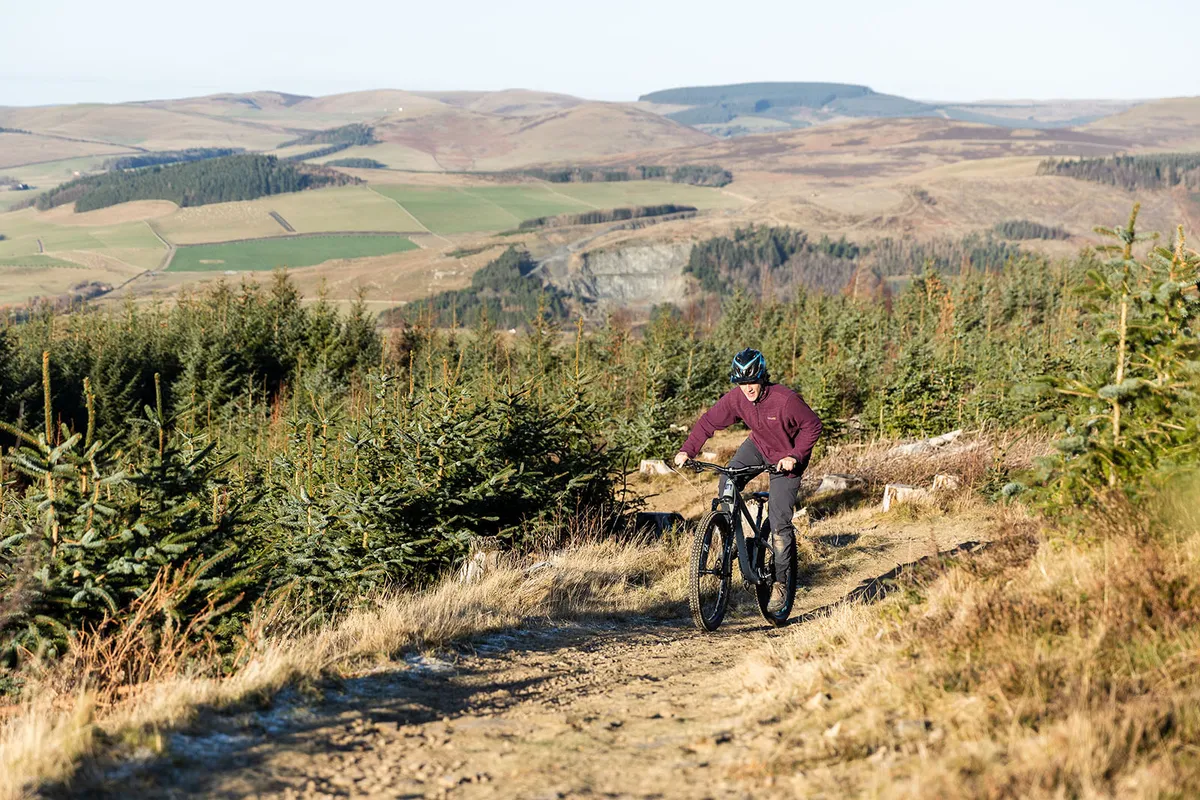
On faster, rougher trails, I found it to be a little harsh at times, ramping up dramatically in the last portion of its travel.
This, combined with the shortcomings of the brakes and tyres, meant the Marin’s confidence-inspiring geometry didn’t shine through as much as I’d hoped when things got rowdy.
However, the issues here lie within the components, not the frame or geometry, meaning they can be solved relatively easily.
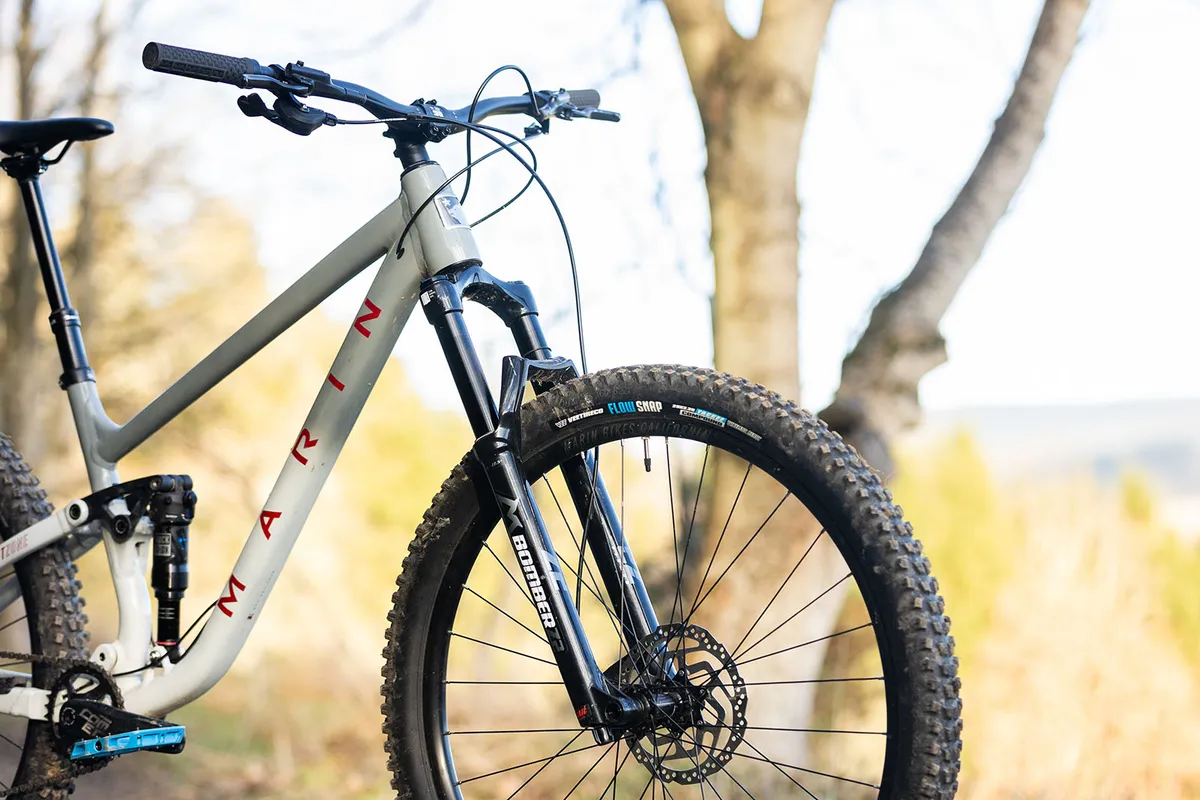
Riders who want to push the Rift Zone on natural trails will be able to unlock more of the bike’s abilities by upgrading to a set of the best mountain bike tyres and some new brakes – or they could consider the pricier Rift Zone XR.
Fitting grippier, more predictable tyres and upgrading to four-piston brakes with single-finger levers wouldn’t break the bank and, considering the Marin’s reasonable price tag, would still offer good value for money.
How does the Marin Rift Zone 29 2 compare to the YT Jeffsy Core 1?
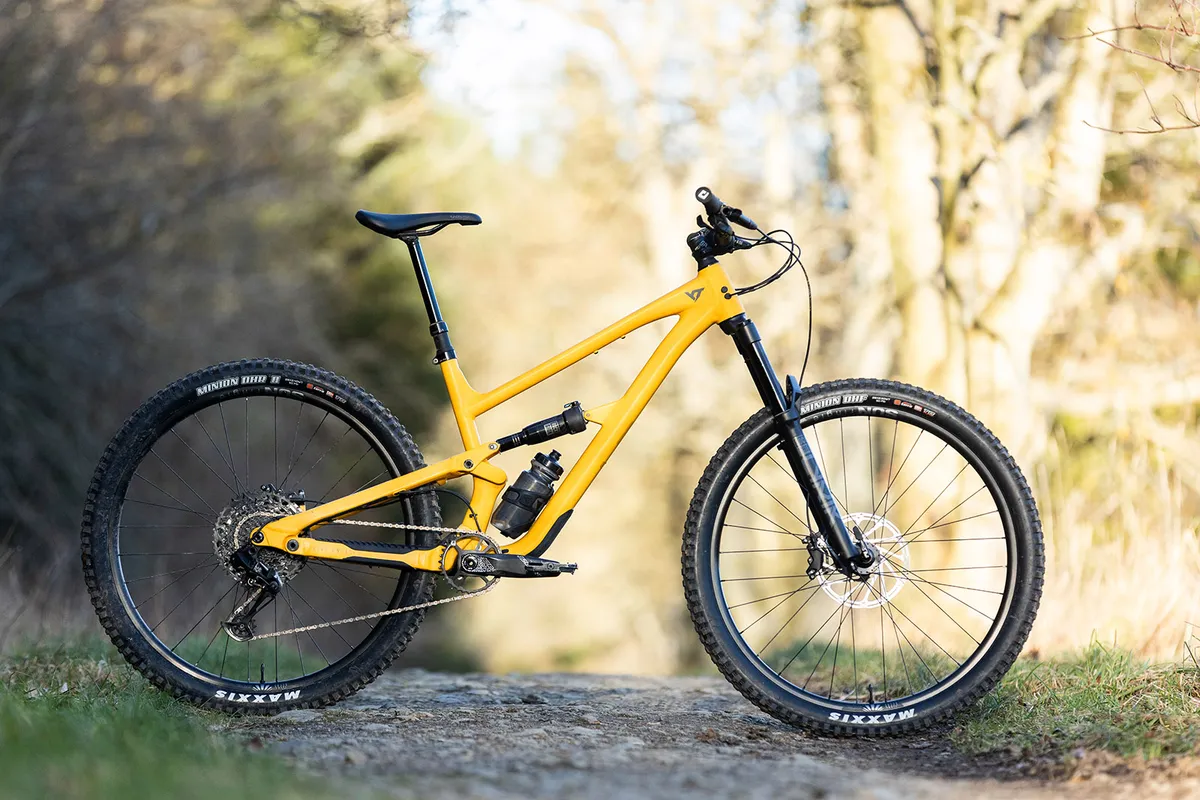
The YT Jeffsy Core 1 is another trail bike that sits in the Marin’s price range, costing £2,499.
The Jeffsy has slightly more travel, with 145mm at the rear and a 150mm fork. It shares similar geometry, with a 65-degree head angle and a 475mm reach in size large.
The Rift Zone’s shorter travel figure is noticeable in rough terrain, and it’s not as composed as the Jeffsy, especially at higher speeds.
There is also a noticeable difference in spec. Granted, the Jeffsy is almost £300 more expensive, but that extra cash gets you superior suspension, brakes and tyres.
Marin Rift Zone 29 2 bottom line
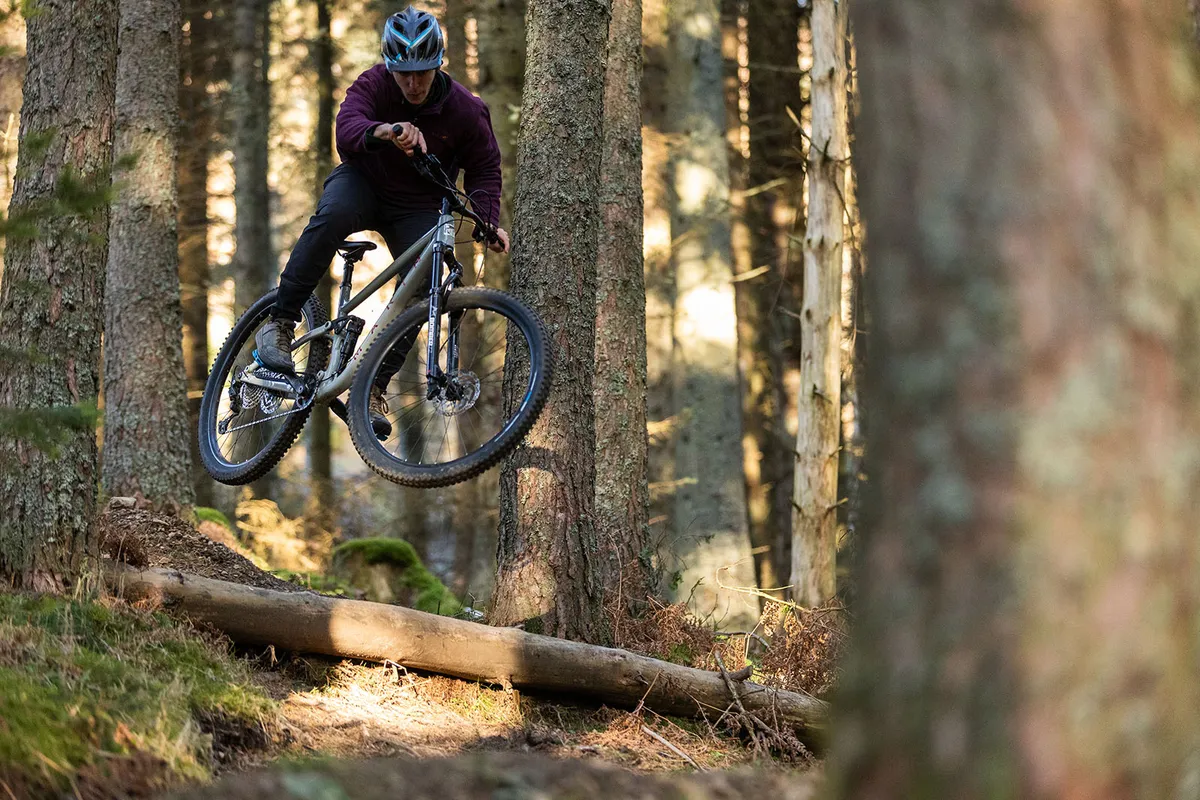
The Marin Rift Zone 29 2 is a fun-loving trail bike for budget-conscious riders.
It’s a shame the performance of its capable geometry is compromised by underpowered brakes and underwhelming tyres.
However, for the price, it’s still a grin-inducing bike that will reward riders looking to have fun on their local trails.
How we tested | £2,500 trail bikes
I tested the Marin Rift Zone 29 2 on a variety of terrain in the Tweed Valley – from the flowing red and black-graded trails at Glentress to the natural enduro trails of Innerleithen and the Golfie.
Conditions were mixed, from wet and muddy to frosty and dusty, a true representation of Scottish winter riding.
The Marin Rift Zone 29 2 was tested as part of a £2,500 trail bike group test.
Also on test
- YT Jeffsy Core 1
- Merida One-Forty 500
Product
| Brand | Marin |
| Price | A$3599.00, €2529.00, £2225.00, $2225.00 |
| Weight | 15.50kg |
Features
| Fork | Marzocchi Bomber Z2, 140mm (5.5in) travel |
| Stem | Marin, 35mm |
| Chain | KMC X-12 |
| Frame | Aluminium, 130mm (5.1in) travel |
| Tyres | Vee Tire Co. Flow Snap 29x2.35 in Tackee Compound tubeless compatible f and r |
| Brakes | Shimano BR-MT200, 180/180mm rotors |
| Cranks | FSA Comet, 32t |
| Saddle | Marin Speed Concept |
| Wheels | Marin rims on Shimano HF-TC500 / Shimano FH-TC500 hubs |
| Headset | FSA No 57E |
| Shifter | Shimano Deore |
| Cassette | Shimano Deore M6100, 10-51t |
| Seatpost | TranzX (dropper) |
| Grips/tape | Marin Grizzly Lock On |
| Handlebar | Marin Mini-Riser, 780mm |
| Rear shock | RockShox Deluxe Select RT |
| Bottom bracket | External Sealed Cartridge Bearing |
| Available sizes | S, M, L, XL |
| Rear derailleur | Shimano Deore SGS (1x12) |
